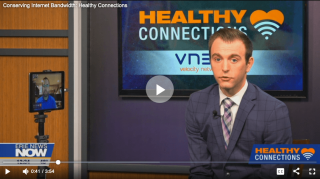Saying Goodbye to Paper
Even as some restrictions are lifted from the COVID-19 pandemic, we all know that we still have to be hyper-vigilant about minimizing the risk of contracting and spreading the virus. Most people will be rethinking how they interact with what was previously regarded as everyday innocuous objects such as cash, restaurant menus, and printed materials. Today, we know these common pathogen carrying surfaces and inanimate objects as fomites.
A history of paper money money and disease

Yuck! Keep your dirty fomites! Do you have Apple Pay?
Did you know that in February of 2020, The Federal Government began quarantining US currency coming back into the US from Asia? A look back into our nation’s history shows that our Government has had to deal with “dirty money” on many different occasions.
US currency was often suspected as a transport for the spreading of cholera in 1849 and then smallpox in 1859. Between 1865 and 1873, more than 70,000 Americans died from smallpox in New York, Philadelphia, Boston, and New Orleans combined, prompting the Treasury Department to begin a redemption program that enabled the banks to exchange “dirty money” for newly printed notes in 1874.
Even into the early 20th century, further outbreaks of syphilis, scarlet fever, and smallpox were linked to tainted money. Finally, the Federal Reserve Act of 1913 included specific verbiage on how and when to destroy the printed currency and replace it to ensure that “dirty money” is removed from circulation.
Thankfully as restrictions begin to lift for the COVID-19 pandemic, we have technology working in favor of helping to minimize transmissions, especially paired with smart social distancing and good hygiene.
Digital Wallets
In a previous Healthy Connections segment, we discussed contactless payment methods. However, there are currently many limitations in that not all banks offer cash and debit card options for contactless transactions. These limitations may rapidly evaporate as there are those in our Government pushing for “digital wallets” to be available for everyone.
Ohio Senator Sharrod Brown has proposed a bill to require member banks to maintain pass-through digital dollar wallets. It’s called “digital dollars” for American citizens, and it would reside in free digital wallets accessible through banks and US post offices. The purpose is to hasten the COVID-19 relief funds to the unbanked or underbanked. If this bill were to be accepted, it would help to transform our nation’s money supply and go a long way to removing the risks to public health.
Resource: https://www.banking.senate.gov/imo/media/doc/SIL20449.pdf
Paperless Menus
The restaurant industry has been making a lot of modifications to its business model with drive-thru service, food pickup, and deliveries. Still, as the public begins to dine out again, there are other considerations when it comes to reducing exposure to fomites. The most obvious one is the menu. It’s one of those items that is touched repeatedly, and depending on the construction, it may not be easy to disinfect.
In a previous Healthy Connections segment, we looked at the contactless payment options offered by Toast. There is another company called Must Have Menus, where you can create an online menu for your restaurant. They will generate a custom QR code that can be printed on tabletop inserts, table tents, posters, and more where the customer only needs to point their smartphone camera at it to receive a link to view the menu. No physical contact with a menu is required for the customer, and restaurant owners can make changes to their menu in minutes without worrying about having to pay for reprints since the QR code stays the same.
Paperless Business Cards
Even the concept of exchanging business cards is called into question. A company called Switchit has developed a digital business card app that allows the user to design a great looking digital card, complete with photos and videos that can be shared with other smartphone users even if they don’t have the app.
The wrap-up
While all of these digital possibilities look promising for reducing the spread of COVID-19, not every member of society has a smartphone and bank account. For now, implementing these digital alternatives would go a long way to establishing a better future normal.
View all the segments on Erie News Now.
Tune in to Erie News Now on Wednesdays at 12:30 PM and 5:30 PM.
